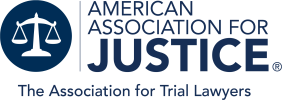When being diagnosed for any condition, disease or illness, it is essential to the effectiveness of the treatment that this is received as soon as possible. When such a diagnosis is “delayed,” the result can be extremely detrimental. This is true for cerebral palsy as well as other disabling conditions. When seeking adiagnosis of a condition, parents and caretakers should make sure diagnosticians are focused on the case at hand. When hospital workloads or scheduling are inefficient, a delayed diagnosis can be the result.
Here are some important suggestions for obtaining an early diagnosis. According to Frederick B. Palmer MD, methods for early cerebral palsy diagnosis include a large variety of measures of the underlying brain dysfunctions alongside their neurodevelopmental reactions. These can be categorized into the following three areas: functional confinement; impairment and pathogenesis.
One of the best techniques for measuring pathogenesis to diagnose cerebral palsy in the preterm and term infant, is neuroimaging. Neurological impairment is measured vis-à-vis muscle tone, reflexes and other similar indications. What makes a diagnosis tricky with babies is that these are not all that predictive in the first few months of life. A baby’s neurological system is not yet completely developed at this point. In most cases, therefore, a diagnosis using neuroimaging can only be determined after the baby reaches six months. Nonetheless, parents should understand that if a newborn of 16-20 weeks displays abnormal spontaneous general movements along with functional impediments in this time period, these have been shown to predict later cerebral palsy.
One way parents can improve their chances of obtaining an early diagnosis of cerebral palsy for their child is by detecting abnormal spontaneous movements. Usually, this is caught in conjunction with an organized follow-up program and development surveillance. Parents concerned that their child may have cerebral palsy and those who are looking for the earliest diagnosis possible, should look for the following: muscle tone variations (too stiff or too flexible); exaggerated reflexes; stiffness with normal reflexes; problematic muscle coordination; tremors/involuntary movements; slow, writhing movements; motor skill milestone achievement like crawling, sitting up etc.; a preference for one side of the body; problems walking (which may be seen through a child walking on their tiptoes); difficulty swallowing or excessive drooling; difficulty eating/sucking; speech delays, etc.
While cerebral palsy is a very challenging condition with which to live, the earlier the diagnosis, the better level of treatment and hope for integrating into a normal life the child will have. Obviously, the prevalence of one or more of these conditions does not mean that the child has cerebral palsy. It does mean, however, that there is a red flag that should certainly send parents to a doctor for further evaluations.






